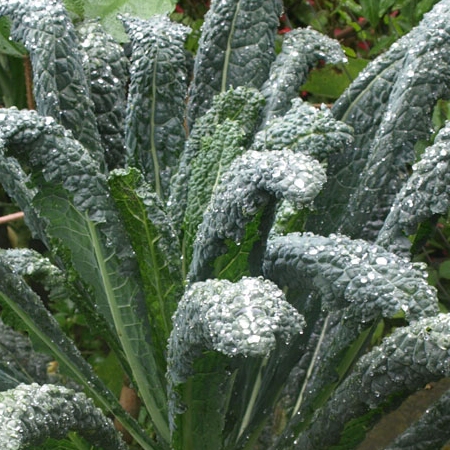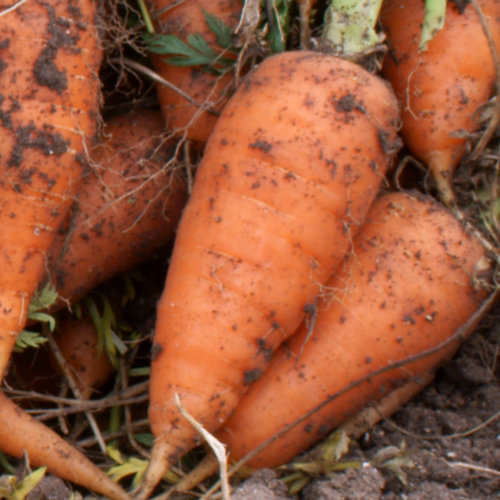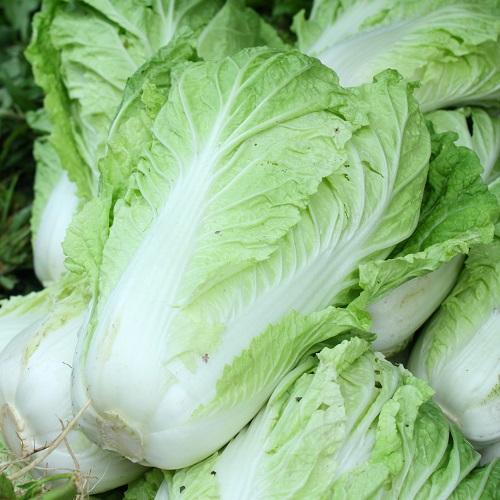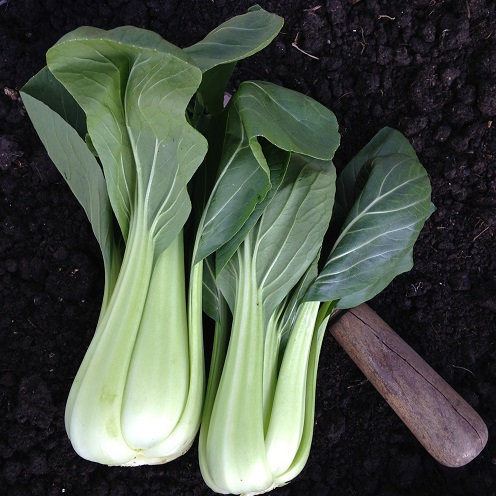| Mizuna is closely related to Mibuna. It produces pencil thin white stalks with serrated, dark green leaves that are an excellent addition to mixed salads. A very prolific cropper which will reform after cutting, sow Mizuna seeds on a cut and come again basis. | | Mizuna Sowing Guidelines | | When to Sow Seeds: | June - October | | Germination Temperature: | 12C + | | Cover Seed: | Yes | | Time to Germinate: | 5 - 7 Days | | Frost Hardy: | Best Protected | | Spacing Between Plants: | 5cm - for picking leaves young.
15cm - for growing full heads. | | Row Spacing | 10cm - for young leaves
30cm - for full heads | |
How To Successfully Grow Mizuna
Mizuna is a leafy vegetable, which originates from Japan. It was only introduced into the UK in the 1990’s but is fast becoming a favourite with gardeners and in the kitchen. The decorative, feathery, deep green leaves can be used raw in salads or lightly chopped and used in stir fries or added to soups. They have a distinct taste, which is not unlike mustard or peppered cabbage. They grow prolifically and are tolerant of cool climates, which makes them ideal for growing in most areas.
This oriental vegetable has some surprising nutritional and medicinal properties. It is high in protein and vitamins, especially vitamin A and C and together with other trace elements is known to assist in the breakdown of the inflammatory chemical called histamine. The plant also contains magnesium which can aid blood vessel function and subsequently help reduce high blood pressure.
Seed sowing
Mizuna seeds can be started under cover as early as January and can be grown throughout the year. Sow the seeds in pots or modular trays filled with damp seed compost and cover lightly with fine sifted compost. Ensure the pots and trays are not left to dry out. It’s better to lay the pots and trays in water rather than water from overhead. Seeds will germinate in 3-5 days, after which they can be transplanted to individual pots or thinned to one plant per module when 2cm-3cm high. Young plants are best acclimatised (hardened off) in a cold frame or cold greenhouse prior to planting out in their permanent positions.
Seeds can also be sown direct into well prepared seed beds from March onwards, and because they are very fast growing, several sowings can be made throughout the summer. Draw a furrow using the edge of a hoe and lightly sow the seeds at a depth of 1cm then lightly cover with fine soil. Use a watering can with a fine rose attachment to gently water the furrows. Once germination has taken place, the plants can be thinned according to their intended use.
Growing in containers
Mizuna will grow well in pots or containers of good quality compost. If grown in pots or modules they can be transplanted into their containers from March and situated in a sunny position or partial shade. They can be used for both decorative and culinary purposes and are good cut and come again providers. However, container grown plants have a tendency to bolt (go to seed) quicker than those planted out in beds and borders. Ensure plants are well watered during dry periods and remove any leaves that are beginning to turn yellow. It is not necessary to feed Mizuna plants if they are planted in good quality compost.
Growing in beds
Ensure the planting area has been well prepared previously by incorporating plenty of organic matter at least 2 months previous. Plants grown outdoors in beds or in the kitchen garden plot offer the best option especially if growing baby leaves, which will be used for salads. Thin the seedlings to between 6cm and 10cm apart and keep well watered during dry spells. Applying a light mulch around the base of plants will help to conserve soil moisture and keep weeds at bay. The first leaves will be ready for picking after about 3-4 weeks.
If the young plants have been grown in pots or modules then transplant to their permanent positions from March onwards at 30cm apart and 30cm between the rows. Water the young plants and apply a mulch around the base. The mature heads should be ready after about 8 weeks. If the plants are allowed to dry out they will most likely bolt (go to seed).
General aftercare
Mizuna is a fast growing Asian vegetable and it has a long growing season, especially if the leaves are cut regularly. Watering is important to keep the plants growing freely but the addition of fertiliser should not really be necessary if the soil has been well prepared in advance. If plants appear to be growing slowly then a watering of high nitrogen based liquid feed at weekly intervals will help to boost growth. Remove any yellowing leaves and stems as they appear and keep beds weed free by hoeing or hand weeding as weeds will attract aphids and other pests.
Pests and diseases
Mizuna are generally trouble free so long as site hygiene is maintained. The seedlings make an attractive meal for slugs and snails in the spring so preventative measures, such as beer traps, saw dust or crushed egg shells should provide a solution. As with any crop that is planted out early, there is always the possibility of an attack by the flea beetle. This will be noticeable by small holes appearing in the leaves. To remedy, grow plants under horticultural fleece and keep well watered. The seedlings are most at risk but as the plants grow quickly, they will eventually out-grow the problem.
Harvesting and storage
For cut and come again harvesting Mizuna will not disappoint as long as the young leaves are picked frequently. For best results, use a sharp knife for cutting and then wash the leaves under running water and use immediately. If growing for the larger heads then remove the tougher outer leaves and stems first before preparing for cooking. The harvesting period can be extended if several sowings are made throughout the summer and if they are later covered with cloches or small poly tunnels during the first frosts, they can still be harvested right up to December.
Mizuna leaves can be kept in a fridge for a few days but freezing can be a little more precarious. If you intend to use for salads, the baby leaves are not really suitable for freezing because after defrosting they will become too soft and darkened by the water content. The larger leaves, used for cooking, will however be fine if they are washed and blanched for 2 minutes then allowed to dry before placing into freezer bags. They should then keep for up to 8 months.




